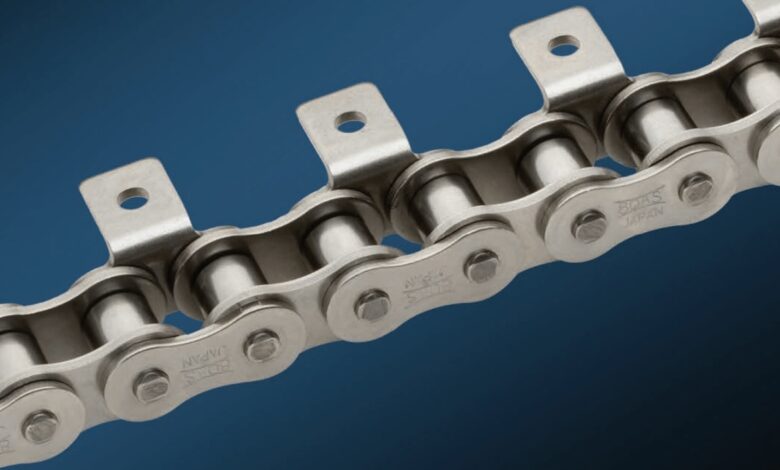Understanding Roller Chains and Their Essential Role in Modern Industry

Roller chains have been a cornerstone of industrial progress for over a century. They were first developed as a more reliable alternative to rope and belt systems that often slipped under heavy loads. Their design, centered around precision engineering, allowed industries to transmit power efficiently between shafts and machinery. Unlike belts, which rely on friction, roller chains use interlocking links and sprockets to achieve consistent movement. This made them indispensable for early factories, where reliable power transfer was critical for productivity.
Over the years, roller chains evolved with advancements in metallurgy and design innovation. Early versions were made from basic steel, but as industries demanded greater durability, manufacturers began incorporating heat-treated alloys and specialized coatings. These changes improved wear resistance and reduced the need for constant lubrication. Roller chains became more versatile, supporting applications ranging from agriculture to automotive manufacturing. Their adaptability is one of the reasons they remain a trusted component in modern industry, even as technology continues to evolve.
Today, roller chains come in standardized sizes, which ensures compatibility across various machines. International standards like ANSI and ISO have streamlined production and enabled global usage. This standardization not only simplifies maintenance but also makes roller chains a cost-effective solution for businesses operating in different parts of the world. The legacy of their development highlights a consistent theme: roller chains are engineered to meet the demands of efficiency, strength, and durability.
How Roller Chains Work in Mechanical Systems
At the core of their function, roller chains are designed to transmit mechanical power through the engagement of sprockets and interconnected links. Each link is constructed with precision, consisting of pins, bushings, and rollers. When the chain moves across the teeth of a sprocket, the rollers reduce friction and ensure smooth engagement. This reduces wear on both the chain and the sprocket, allowing the system to operate with less energy loss compared to belt-driven mechanisms.
The efficiency of roller chains lies in their positive engagement system. Because the chain directly meshes with the sprocket teeth, there is no slippage under load. This is particularly important in applications requiring synchronized movement, such as in conveyor belts or timing systems in engines. In agricultural machinery, roller chains are often responsible for driving harvesters, balers, and other essential equipment, ensuring that timing remains precise under demanding conditions.
Another advantage of roller chains is their ability to withstand high tensile loads. They can operate in environments where belts would either slip or snap due to tension. With proper lubrication and maintenance, roller chains can function reliably for thousands of operating hours. Their ability to handle both slow, heavy-duty operations and high-speed transmissions makes them one of the most versatile mechanical components in existence.
Roller chains are also highly customizable. Engineers can select chains of varying pitch, width, and strength to match specific applications. Some are designed with corrosion-resistant materials for use in marine or food-processing industries, while others are reinforced for mining or heavy construction machinery. This level of adaptability ensures that roller chains continue to find relevance across a wide spectrum of industries.
Industrial Applications of Roller Chains
Roller chains are found in an impressive range of industries, underscoring their versatility and reliability. In manufacturing plants, they are often used in conveyor systems that move products along assembly lines. The consistent speed and synchronization offered by roller chains allow for seamless automation, improving efficiency in mass production.
The automotive industry also relies heavily on roller chains. Engine timing chains, for example, ensure precise synchronization between the crankshaft and camshaft, allowing valves to open and close at the correct moments. This is essential for fuel efficiency and engine performance. Unlike timing belts, roller chains can withstand higher stress and last longer, which makes them an attractive choice for many automakers.
Agriculture is another sector where roller chains prove their worth. Tractors, harvesters, and baling machines all depend on roller chains to manage heavy-duty tasks in challenging environments. The ability to endure dirt, moisture, and constant use makes them particularly valuable in farming operations.
In construction and mining, roller chains are used in heavy equipment such as excavators, conveyors, and crushers. These machines demand robust components capable of transferring power under extreme conditions. Roller chains, with their proven durability, meet these requirements. Even in specialized sectors like food processing, stainless steel roller chains are used to maintain hygiene while handling rigorous mechanical tasks.
Maintenance and Longevity of Roller Chains
Proper maintenance plays a significant role in extending the lifespan of roller chains. Lubrication is one of the most important aspects, as it reduces friction between the chain’s components and prevents premature wear. Inadequate lubrication can lead to stiff joints, increased noise, and eventual chain failure. Modern industries often employ automatic lubrication systems to ensure consistent application, minimizing downtime and manual effort.
Tension adjustment is equally important. Chains that are too tight can accelerate wear, while those that are too loose may skip over sprocket teeth and cause operational disruptions. Regular inspections allow operators to detect issues early, such as elongation or misalignment. Replacing worn sprockets alongside roller chains ensures smooth engagement and prevents uneven stress.
For industries operating in harsh conditions, selecting the right type of roller chain is critical. Corrosion-resistant versions are ideal for moisture-prone environments, while heavy-duty chains are engineered to handle shock loads and abrasive materials. By choosing the appropriate design and adhering to scheduled maintenance practices, roller chains can perform reliably for years, reducing costs associated with unexpected breakdowns.
Innovations in Roller Chain Technology
Advancements in materials and design have led to innovative developments in roller chains. Coatings such as nickel plating or specialized polymers provide better resistance to corrosion and wear. Self-lubricating roller chains have also emerged, eliminating the need for frequent lubrication in certain applications. These innovations not only reduce maintenance demands but also improve efficiency and reliability in demanding industries.
As industries continue to push for greater automation and productivity, roller chains remain a vital component. Their balance of strength, efficiency, and adaptability ensures they will continue to power machines and processes for decades to come.




